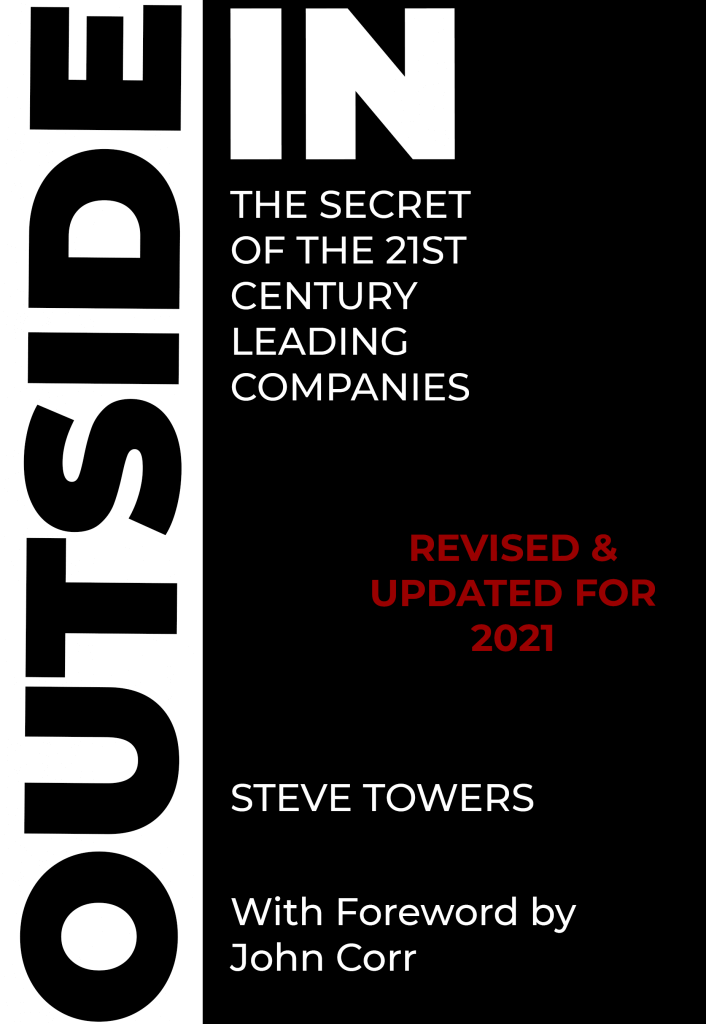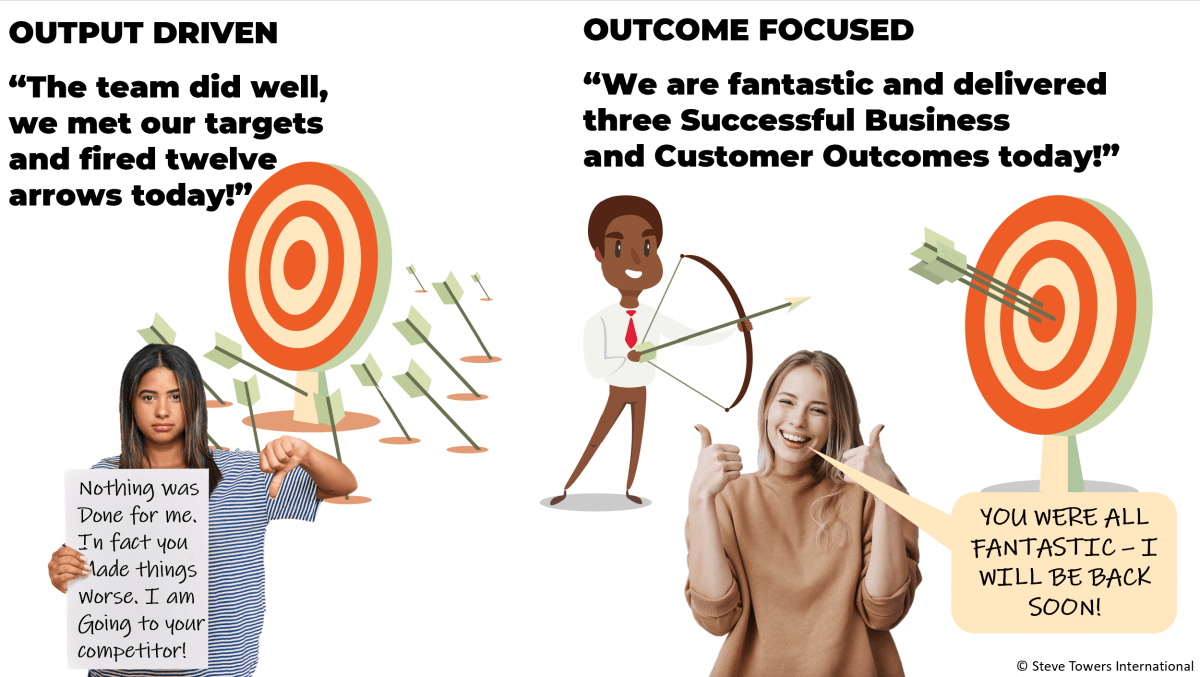You may have seen the recent posts discussing the difference between inside-out (industrial era) and Outside-In (Customer Age) thinking and practice. At the heart of the difference is the contrast between Outputs and Outcomes.
In the Industrial Age Outputs were king in the form of cars made, factories built, pizzas delivered, and so on. It was simply good enough to improve efficiency and productivity to deliver success. Not so in the Customer Age where Outcomes delivered has become the thing.

It really has become a differentiator between those who are succeeding, despite the pandemic, and those who are struggling.
Since I wrote the book ‘Outside-In The Secret’ in 2010 I have had so many conversations at all levels in global companies describing the huge difference in this mindset of delivering successful business and customer outcomes in contrast to old industrial age outputs.
Unfortunately people who should know better are still confused. In this article we will:
- Define the seismic difference between Outputs and Outcomes
- Provide recent examples
- Share useful resources
Let’s start with definitions:
An Output is what we produce, what we make.
Say a completed car.
A Business Outcome is a result of what we make. In the car example, it would be Revenue.
But wait, in the Customer Age there’s more…
A Customer Outcome is what we deliver for the Customer. For the new purchase, it could be Joy at buying the nice bright shiny new car.
The problem and the confusion.
Most businesses have inherited a legacy of measurement systems focused on outputs. So say for instance in a customer contact center we would have metrics like calls handled, abandoned calls, average handle times, first-time response, customer satisfaction stats, net promoter scores, and so on. But these are all output measures.
Another example might be in the Program Management Office where measures may include things like the number of projects underway, the progress against budgets, and achievement of the deliverables.

Now here’s the rub. If you connect the achievement of these outputs with rewards systems you will potentially fail big time. And if in the contact center people aren’t caring about the outcomes (the results of the outputs) we might get really good at doing dumb things. In the Program Office if the deliverables aren’t aligned with Successful Customer Outcomes we may become really efficient at delivering the wrong things.
And another thing people familiar with outputs often argue the case that Outcomes are less quantifiable. Not so. Business Outcomes include things like Revenue, Cost Optimization, Service Delivery, Effective compliance, and so on. You can’t get any more quantifiable than that. Now with Successful Customer Outcomes, we may have a description of what that feels like – BMW’s ‘Joy’ for instance or Hallmark Cards ‘Expression’.
Connecting the Dots
Over the last two decades, a model has emerged that literally links Outputs to Outcomes. There is a hierarchy that connects Tasks to Activities to Outputs to Business Outcomes and ultimately Successful Customer Outcomes.
We will review that model and thinking in the next article.
For now look at your metrics. Are your measures of success outputs or outcomes?
Do you want to embrace advanced Customer-Centric thinking and become Outside-In?
👉 Step #1 – Review the upskilling options to become an ACX Professional & ACX Master: https://lnkd.in/dANgYX59
👉 Step #2 – Get The Book: Outside-In The Secret *FREE* https://bit.ly/OI2021now
👉 Step #3 – Connect With The Community: https://linktr.ee/SteveTowers
👉 Step #4 – Keep Pace with Change: Recent Keynote – The Hard Benefits of XM | https://cemnext.com/xmroi2023
👉 Step #5 – Review the Testimonials Accredited Customer Experience Professional – BPG (bpgroup.org)

